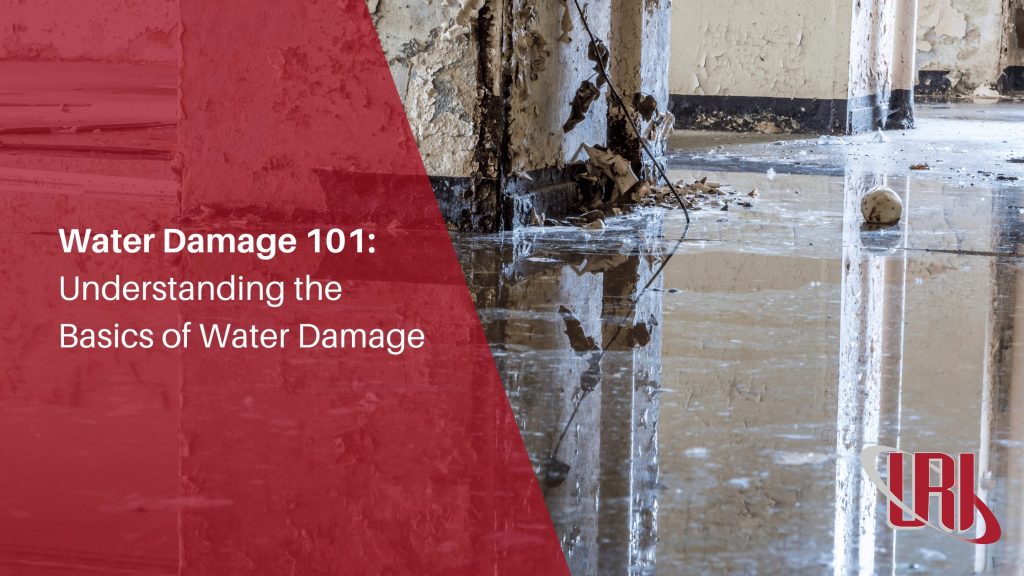
Water damage can cause significant harm to commercial, industrial, and multi-family residential properties, leading to costly repairs, disruption to normal business operations, and even potential health risks. To effectively address and mitigate water damage, it is crucial to understand the various categories and classes that define its severity and potential hazards. In this post, we will cover what URI considers Water Damage 101 and explore the different categories and classes of water damage, helping you as a property or facility management professional identify and respond to water-related issues more efficiently.
Water damage is typically categorized into three main categories based on its level of contamination:
Category 1 water damage refers to water that originates from a clean source, posing minimal health risks. This may include water from broken supply lines, sink overflows, or rainwater. While Category 1 water damage is not immediately harmful, it can escalate to more severe categories if left untreated.
Gray water damage involves water that is contaminated to some extent. This water may contain chemicals, microorganisms, or other pollutants, posing a moderate health risk. Examples of gray water sources include dishwasher or washing machine overflows, toilet backups (with no solid waste), or water discharge from sump pumps.
Black water damage is the most severe category and poses significant health risks. It contains highly contaminated water that may include sewage, chemicals, pathogens, or other hazardous substances. Floodwater, sewage backups, or water from natural disasters fall under this category. Professional assistance is essential when dealing with black water damage due to the potential health hazards involved.
Water damage is further broken down into four classes based on the extent and severity of the damage:
Class 1 water damage refers to situations where only a small area is affected. The water has not deeply penetrated materials, making restoration relatively straightforward.
Class 2 water damage involves a larger area, with water having possibly soaked into porous materials like carpets and cushions. Restoration may require more extensive drying and extraction methods.
Class 3 water damage occurs when water saturates walls, ceilings, insulation, and other structural components. Restoration in these cases can be challenging, requiring professional expertise and specialized equipment.
Class 4 water damage involves unique materials with low porosity, such as hardwood floors, concrete, or plaster. These materials require specialized drying techniques to prevent further damage and ensure proper restoration.
Understanding Water Damage 101, or the categories and classes of water damage is crucial for effective response and mitigation in the case of a water damage-related emergency. Whether you are dealing with clean water damage or facing the challenges of black water contamination, promptly addressing the issue and seeking professional assistance will help minimize the damage, protect your property, and reduce business interruption. Failing to address the issue only worsens the situation and can lead to more problems down the line.
If you experience any sort of water damage at your commercial, industrial, or multi-family residential property, rest assured with Unlimited Restoration – We’re On It! Call our 24/7 Emergency Response Hotline for immediate assistance in getting your property back to pre-loss condition: 888.327.9664.